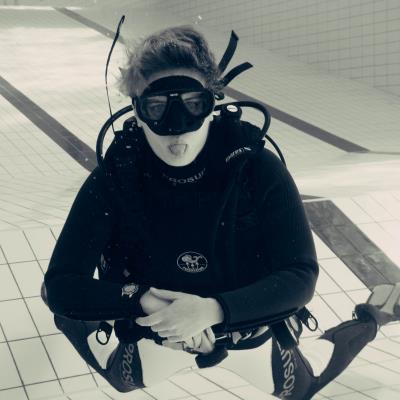 written by Susann Diercks
written by Susann Diercks
Why have Antarctic Icefishes lost hemoglobin and / or myoglobin?
Antarctic waters are characterized by a relatively constant temperature ( −1.8 and +1 °C) and a the availability
and stably high content of oxygen (Garofalo et al., 2009).
The Channichthyidae family is one of eight families within the perciform suborder Notothenioidei and it is suggested, that the event of losing hemoglobin happened prior to the radiation of the family, and at or near the time of divergence from the notothenioid lineage (O'Brien and Mueller, 2010). Near et al. (2006) state that the loss of Hb by channichthyids was not due to a single mutational event. In antarctic fish the catalytic activities of lactate dehydrogenase are remarkable high, compared to warm temperate and tropical orthologs (Fields & Somero, 1998; Petricorena & Somero, 2007). The enzyme activities their heart and locomotory muscles tissues - on the other hand - coming from pathways of aerobic and fatty acid metabolism is enhanced in comparison to ecotypically similar temperate species (Crockett and Sidell, 1993).
References:
Acierno R., et al. (1995) Blood volume in the hemoglobin less Antarctic teleost Chionodraco hamatus (Lonnberg). J. Exp. Zool. 272, 407–409
Crockett E.L., Sidell B.D. (1993) Substrate selectivities differ for hepatic mitochondrial and peroxisomal beta-oxidation in an Antarctic fish, Notothenia gibberifrons. Biochem. J. 289, 427–433.
Eastman J.T. (1993) Antarctic Fish Biology: Evolution in a Unique Environment, Academic Fields P.A., Somero G.N. (1998) Hot spots in cold adaptation: localized increases in conformational flexibility in lactate dehydrogenase A4 orthologs of Antarctic notothenioid fishes. Proc. Natl. Acad. Sci. U. S. A. 95, 11476–11481
Garofalo F., Pellegrino D., Amelio D., Tota B. (2009) The Antarctic hemoglobinless icefish, fifty five years later: A unique
cardiocirculatory interplay of disaptation and phenotypic plasticity, Comparative Biochemistry and Physiology, Part A, 154, 10-28
Holeton G.F. (1970) Oxygen uptake and circulation by an hemoglobinless antarctic fish Chaenoeephalus aeeratus, compared with three red-blooded antarctic fish. Comp Biochem Physiol 34: 457 – 471
Holeton G.F. (1975) Respiration and morphometrics of hemoglobinless antarctic icefish. In: Cech JJ et al. (eds) Respiration of marine organisms. Trigom publ, S. Portland, Me, pp 198- 211
Near T.J., Parker S.K., Detrich H.W. 3rd. (2006) A genomic fossil reveals key steps in hemoglobin loss by the antarctic icefishes. Mol Biol Evol 23:2008–16
O'Brien K., Mueller I. (2010) The Unique Mitochondrial Form and Function of Antarctic Channichthyid Icefishes, Integrative and Comparative Biology, volume 50, number 6, pp. 993–1008
Petricorena Z.L., Somero G.N. (2007) Biochemical adaptations of notothenioid fishes: comparisons between cold temperate South American and NewZealand species and Antarctic species. Comp. Biochem. Physiol., Part A Mol. Integr. Physiol.147, 799–807
Sidell B.D., et al. (1997) Variable expression of myoglobin among the hemoglobinless Antarctic icefishes. Proc. Natl. Acad. Sci. U. S. A. 97, 3420–3424
Sidell B.D. (1998) Intracellular oxygen diffusion: the roles of myoglobin and lipid at cold body temperature. J. Exp. Biol. 201, 1118–1127
Tota B., et al. (1997) The heart of the Antarctic icefish as paradigm of cold adaptation. J. Thermal Biol. 22, 409–417
Vayda M.E., et al. (1997) Conservation of the myoglobin gene among Antarctic notothenioid fishes. Mol. Mar. Biol. Biotech. 6, 207–216

Load more comments